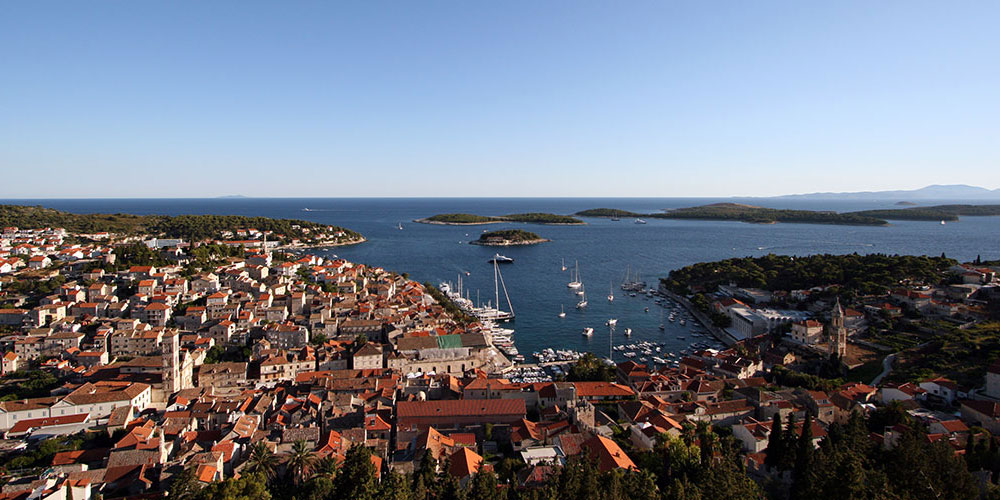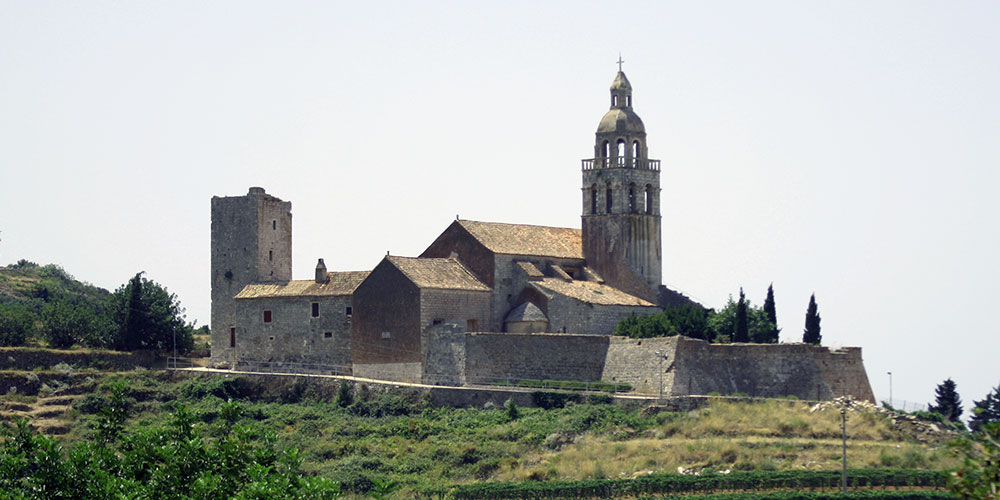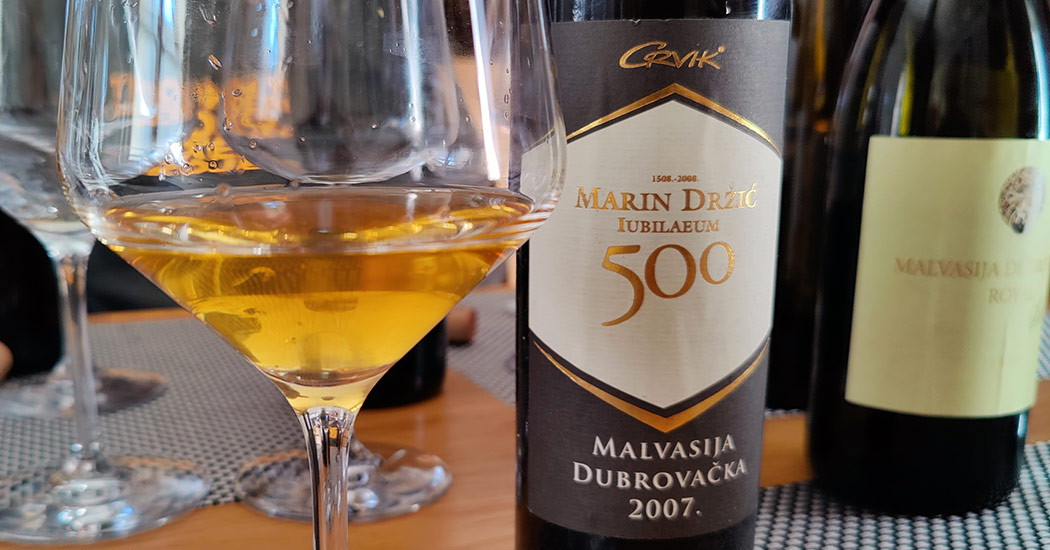In regards to tourism, Croatia is now a destination in its own right and has long shed the infamous, “The Next” descriptor which has seemingly been passed on to Albania, now “The Next Croatia”. In terms of wine, it’s been considerably slower going. In a good year, Croatia will get close to being in the Top 30 of wine-producing countries, but there are admittedly few eyes yet glued on their wines.
I’ve been tasting and writing about the wines for well over a decade and it amazes me as to how obscure they generally remain. The main reason for this is that the Croatians had to dig themselves out of a deep vinous hole following the dissolution of the former Yugoslavia as the winemaking cooperatives were known for anything but quality. Amazingly, unlike the privatization of other former Communist countries where the cooperatives either shaped up or collapsed, those in Croatia have continued to make wine to this day although some, like Vinarija Dingač have finally succumbed to their unwieldy, un-21st century nature.
Croatia has a lengthy list of items in its favor such as claiming a winemaking history longer than the world’s top producers of: France, Italy, and Spain. Its most well-known zone is along the Adriatic Sea where Mediterranean climates abound making for robust, flavorful reds and whites. Then there’s the Continental region where more classic white grapes, light reds, and sparkling wines flourish. Croatia holds a wealth of interesting native grape varieties that, despite being difficult to pronounce (“Grk” and “Dobričić” don’t roll off the tongue) they make fine wines that continue to grow in quality.
There are bigger issues at play however that work to nullify their advantages. Ivica Matošević, who has a family cellar in Istria and was the president of the VinIstra regional association for years, can readily lay them out. “We’re seriously lacking in governmental support, yet we need a national strategy to come into place very quickly as the private wine industry isn’t strong enough to create the initiative on its own.”
While these are arguments you hear from literally every wine region around the world, the problem for winemakers in Croatia has been compounded since joining the EU in 2013. Currently, some 30% of the wines sold in Croatia are imported. This is problematic as the Croatians are only exporting 5% of their total production and is making for a heavy trade imbalance that has been affecting the Croatian winemakers more every year.
Istria, which borders Italy and Slovenia generally fares better than the rest of Croatia. Ivica says that at his cellar, they actually grew 10% in terms of volume last year and his idea is to have about 50% sold on the domestic market, 25% in export, and 25% at the cellar door. “In Istria, due to our location next to Italy, we’ve been able to increase our enotourism offer a great deal. Sales at the cellar door grew 40% last year and for those even closer to the coastal villages, it’s more.”
Many are surprised to learn that it’s the white grape, Malvazija Istarska (a unique Malvasia that’s genetically distinct and not to be confused with Malvasia Dubrovačka or the Italian Malvasias) which is the motor of Istrian wine. With 3,050ha planted, it dwarfs the red, Teran at 300ha. It comes in many different styles, ranging from simple, inoffensive cold-maceration bottles that are reminiscent of mass market Pinot Gris to much more complex, barrel-aged wines that can actually demonstrate a great deal more terroir and complexity.
Although it forms the remaining portion of Croatia’s coast, what is true of Istria, cannot be said of Dalmatia. While its sunny shores and blue waters have attracted the likes of Master of Wine, Jo Ahearne to set up shop, they’ve had a great deal more difficulty rallying together as a region. It’s hard to pinpoint the exact issue but whatever it is, they’re often competing with one another to promote their wines singularly instead of working to create a united front and it’s only this year that a nascent, regional wine association has begun to take shape.
Despite having trouble finding consistent traction in the wine world, much like the Istrians with Malvazija, the Dalmatians have strived to hang their hats on Plavac Mali. In the right hands, the grape can make outstanding wines, even if some vintages can be lacking in acidity. The Dalmatians however have a big issue in the pricing of their wines. Wherein the Istrians and the Continental winemakers are able to present an entry level, stainless-steel produced line in the neighborhood of 5-7€, Dalmatian wines will often start at 10€ or more. A large part of this is that the cost of the grapes has historically been and remains high at 2-3€/kg to start. Jo Ahearne, as a worldly and experienced winemaker says, “The Plavac Mali grape will ripen unevenly so resulting yields are as low as 500L a tonne. That then takes the equivalent price to more like 3-3.5€/kg.”
Why the Dalmatians would want to rally behind such a tricky variety is that in reality, while a native Croatian grape, it is helped by its story of International pedigree being the child of the grape we know better as Zinfandel or Primitivo. There has also been renewed interest in this parent grape coming back to its native land where it was initially called, “Crljenak Kaštelanksi”. This mouthful has thankfully been dropped in favor of the slightly easier, Tribidrag and at the end of last April, as group of local enthusiasts called, The Tribidrag Association, held the first ever, “Conference on the Tribidrag Variety” in Split.
Work such as this, while small in scale and again, lacking a large, governmental push, has been critical in terms of educating people although Ivica says and it’s unarguable that, “a good deal more education needs to happen.” Similar to the Tribidrag conference, in the Continental region they’re organizing a “Graševina Conference” in July to work in a similar fashion.
Given a lack of governmental push, much of the education has fallen on the shoulders of private Croatians, such as Taste of Croatia, who have wished that the public outside their borders understand their wines. Beyond the end consumer, the wines are also in need better communication at a professional level. Siniša Lasan, a sommelier from Dubrovnik and I were commiserating at a recent international wine judging in London that many wine professionals still don’t understand the innate characteristics of Plavac Mali or Croatian winemaking in general. But taking this in a positive light, the fact that two people were having a conversation and participating at such a high-level event shows that the communication is indeed slowly happening.
There are of course annual wine fairs in the country that strive to show the wines of the country to both a national and international audience. Unfortunately, there has been a decidedly patriarchal tinge to most fairs to date with wineries hiring runway-aspiring girls wearing “warmer weather clothes” in winter to pour at their stands or then similar girls walking around handing out cigar samples. This hasn’t lent a professional light to the wines, especially as internationally, women have been serious buyers, winemakers, and writers for decades now and this anachronistic sexism has zero place in the modern wine trade.
This is what made an event such as the “Grand Tasting” in Zagreb last February a breath of fresh air as it focused on bringing together the “Top 100” producers in the country as deemed by the organizer Saša Spiranec. It also charged a rather hefty (for Croatia) entrance fee of 20€ that by and large worked to keep out the hordes who attend the events solely to get drunk. There was a more tranquil and professional setting that allowed conversations with winemakers such as Josipa Andrijanić, an experienced enologist who has traveled the world making wine.
“Unlike many of my classmates, I had some offers to work in Croatia, so I traveled to go out and explore the world where for others it was a necessity.” And this highlights another problem in Croatian wine in that many people who have completed the well-regarded enology program in Zagreb usually leave. Family wineries are often wont to bring in outsiders and even those that do often won’t pay well.
There is a whole generation of those in their 20s and 30s who have been wandering the world, but slowly they’re coming back and Josipa is a perfect example as she has been charged with starting a new cellar with a well-known singer in Croatia named, Miroslav Škoro. “I’ve never done something of my own in Croatia and this was the chance to build a cellar from the ground up that will allow me to work in my more reactionary than formulaic method of winemaking.” And this is the quintessential silver lining for Croatian wine currently in that many of those who worked internationally, doing up to three harvests a year are now nearing 40 and are deciding to settle down and are returning with a wealth of what is literally worldly experience.
It couldn’t happen at a better time as the Croatian government is finally set to completely overhaul their archaic wine regulations. These have been limping along since Yugoslavian times and include a classification level that ranges from “Table Wine” to “Excellent Wine” that was opaque and no international customer could ever wrap their head around. They’re also addressing the miserly 16 appellations, 11 of which most people claim haven’t ever worked and were too few anyways for a country 2/3 the size of Portugal. While very protracted to finally complete, these changes are set to bring Croatia more in line with EU and international standards in terms of wine classification.
And this is ultimately where Croatia now sits, at a point of potential. It has been in this holding pattern for a few years though as the initial hurdle of cellar modernization was crossed years ago. It will take continued efforts by quality family cellars like Matošević, worldly-enologists like Josipa, passionate sommeliers and wine writers like Siniša Lasan and the Taste of Croatia crew, as well as the additional reforms from what is currently a slow-moving government to be a country from which fine wines emerge with regular frequency and friendly prices on all levels.




